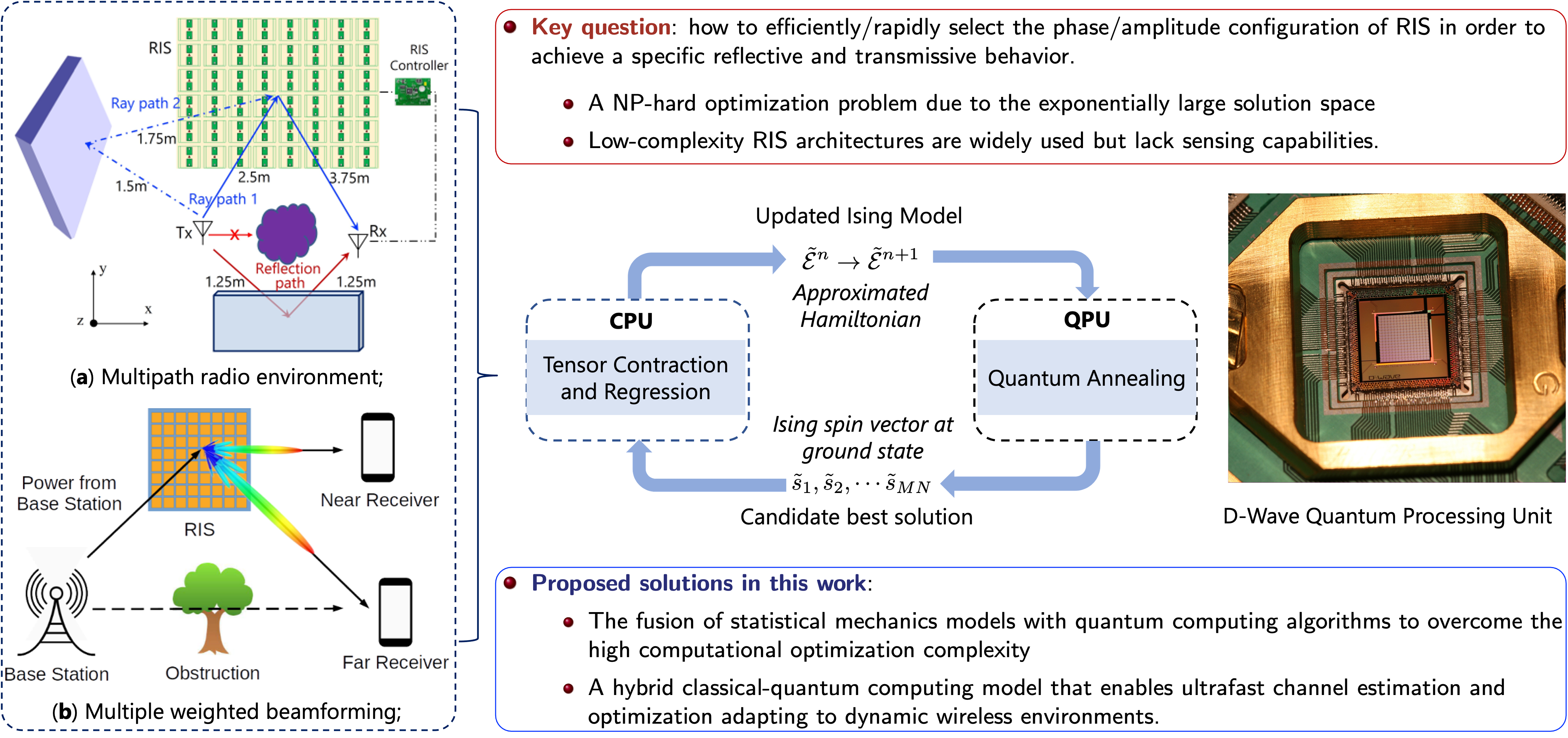Quantum Computing and Optimization in Smart Radio Environments
Collaborator: Gabriele Gradoni@Surrey
With rapidly evolving quantum devices and materials, in the near future, there will likely be special-purpose quantum computers with hundreds of high-quality qubits and controllable nearest-neighbor couplings. A forward- thinking question is, how do we leverage “quantum advantage” and develop quantum algorithms for electromagnetic problems and wireless applications? In this section, we will discuss our recent studies of quantum computing algorithms and hybrid classical-quantum computing models for reconfigurable wireless environments.
The reconfigurable intelligent surface (RIS) is emerging as a key technology for the next generation of wireless networks. The general goal is to turn the wireless environment into a smart/reconfigurable space that plays an active role in the wireless communication performance. Going beyond 5G and entering 6G, it is envisaged that large-scale, distributed RIS devices may be deployed at the surface of interacting objects, e.,g. wall, windows, and furniture, in the propagation channel. A joint optimization of wireless endpoints and distributed RISs would lead to a dynamically programmable and customized wireless environment, with a goal of providing enhanced coverage with high energy efficiency and supporting ultra-fast and seamless connectivity.
To harness the full potential of a RIS-enabled smart wireless environment, one needs to rapidly optimize the states of RIS with prescribed objective functions, e.g., beamforming, localization/focusing, and channel diversity. This constitutes a substantial computational task in both the physical and network layer of wireless communication. Furthermore, one assumption adopted in the wireless community is that the RISs are nearly passive due to minimal hardware complexity and power requirements. Namely, the RIS may not have the capability to sense the wireless channel and estimate directions of arrival/departure. The channel estimation cannot be implemented on the RIS side, but rather at wireless endpoints of the communication link. This makes the channel optimization of RIS-assisted networks very challenging.
The scientific contribution in this work is a physics-oriented, mathematically tractable computational framework for optimizing RIS configuration in complex radio environments. Such optimization is performed without the need to estimate the segmented channels that link the transmitter to the RIS and the RIS to the receiver. The new idea starts with expressing the power of end-to-end channel transfer function as an Ising Hamiltonian model. A hybrid classical-quantum computing model is proposed next to navigate the RIS configuration space and to rapidly optimize the RIS state in a multipath radio environment. Compared to the state-of-the-art solutions, we show that the Ising Hamiltonian model serves as a unified mathematical model describing wave physics in the RIS-assisted wireless network. By leveraging the computing power of quantum adiabatic evolution and mathematics of tensor contraction, the channel estimation and optimization can be completed in the order of milliseconds. The outcomes enable the possibility of ultrafast optimization adapting to dynamic wireless environments.

We believe that the physics of complex systems fused with quantum computing will constitute a game changer in the modeling and design of large network of RIS devices cooperating in order to transform real-life propagation environments into a resource for future mobile networks, including SONs and cell-free networks.